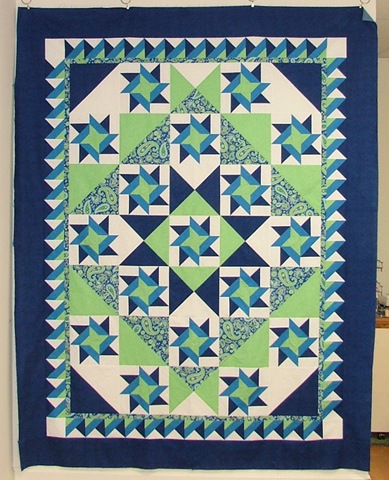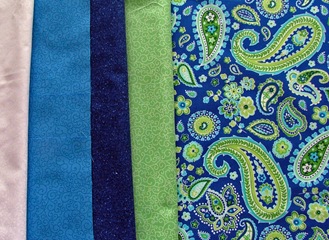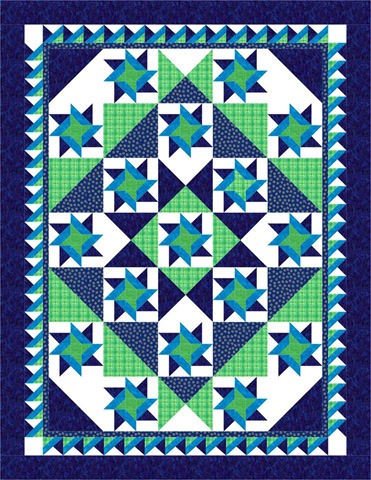Here’s a photo of the quilt top hanging in the shop:

The photo does not do the fabrics justice. Here’s a closer look at them:

I figure that I will point out the two different borders to the class, and let them decide which way they want to place them.
And now a bit of commentary:
The 17 “twister” stars are each made up of 4 units. In the quilt construction you end up with the 68 units you need for the stars, plus 68 mirror images that you use in the border. Clever, right?
However, there is a small price to pay for all this cleverness. You have 136 units that need to be trimmed to size before you can start assembling.
That’s 136 of these:
and eventually leave you with this:
That’s a lot of trimming! Faced with the pile of untrimmed blocks, I questioned the benefit of creating “oversized blocks that need to be trimmed”
versus “just cutting the correct size pieces in the first place and sewing carefully”.
I did not want to tackle all that trimming in one session, so I broke it up into several smaller ones. I would trim about 12-15 at a time, in between doing other steps.
I also broke down into smaller steps all the blocks that needed to have a diagonal sewing line drawn on the back. There were 136 of those, too.
That mix and match sort of technique (cut a few, sew a few, iron a few, trim a few, draw a few lines) is what kept me sane during making of this quilt, but it could also be a little confusing and likely contributed to my eventual error in the border. (Also, I don’t recommend making a quilt with a deadline. )
HOWEVER…..
When it came time to actually sew all the blocks together into a quilt top, the sewing was a breeze,
I tell ya, a BREEZE! All the pieces fit beautifully together because all the trimming had made them a uniform size.
So I got off my high horse of thinking that piecing accurately in the first place is the better way, and decided that both methods have merit. My high horse will still be there waiting for the next time I feel like acting superior.







